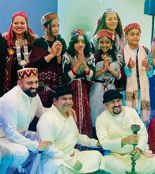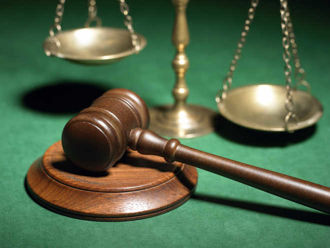Against Erasure: A Photographic Memory of Palestine Before the Nakba Edited by Teresa Aranguren, et al. Haymarket Books. Pages 230. $39.95
Book Title: Against Erasure: A Photographic Memory of Palestine Before the Nakba
Author: Teresa Aranguren
Shelley Walia
“Never again will a single story be told as if it is the only one” — John Berger
Ever since the Nakba in 1948, which, in the words of Pierra Nora (1996), “has become the key Palestinian site of memory”, there has been an onslaught of deceptive reporting and construction of “anti-history” replete with lies, ambiguities and distortions. It is an exercise in self-deception as well as duplicity, a syndrome of Nakba denial that has for long existed as a post-truth reality deceiving people across space and time.
To set the record right, ‘Against Erasure: A Photographic Memory of Palestine Before the Nakba’ sets out as a reminder of not only the history of the people of Palestine, but also about the undying struggle against its very erasure. It is a tribute to the emotional power of memory, taking us back to the past of the Palestinians before the Nakba, rendering the whole period as an expression of their vibrant culture, traditions, principles and lifestyle, unravelled through spectacular images of their land demonstrating a life of joy and beauty, of perseverance and resistance.
The thriving history of that period is a testament to their struggle for liberation, a blissful return to the days of cultural and national pride. It is a future of return to a flourishing existence amidst olive plantations that hark back to their forefathers who planted them. As Omar Barghouti, the Palestinian human rights defender, says, in such times, it is “more important than ever to always remember to see the human behind the number, the oppression behind the violence and the complicity behind the genocide”.
The ethnocentric archetype of the “promised land-chosen people” underpinned the Jewish plan for the thorough wiping out of Palestine from the map. As Israeli Prime Minister Golda Meir said in 1969, “There was no such thing as a Palestinian people… They did not exist.” The infamous Zionist slogan — “a land without a people for a people without a land” — had finally fructified in the idea of complete erasure of an entire nation and its people. The physical and cultural environment of Palestine was blown to smithereens with the onset of the Nakba. Time had arrived when the Palestinians could not keep quiet.
The book is, therefore, well-timed, a celebration of the age-old heritage that is a reservoir of strength combined with the pain of facing the second Nakba. Revisiting history is to find inspiration to confront the most abysmal watershed moment menacing their very existence. In the face of a bloodstained tragedy, the people of Palestine share through these stunning pictures their sense of the past, and of their cultural roots. Upholding the peaceful past in this dark hour is a critical defence against cold-blooded apartheid. Voices rise, songs are written and sung, combating a milieu of fear and pain that they and their children have endured for years.
As this terrible tragedy unfolds, “Pride becomes not just a celebration of resilience, hope and solidarity, but a protest against the world that conspires to erase us through brutality and silencing.” The pictorial rendition of history is a profound addition to the literature of liberation, rich in images “in which the viewer encounters the unfamiliar, the unexpected, and often the startling”. An image is always, by itself, a valuable object, but its value increases if not reduced strictly to the physical gaze but to a “seeing”, which is also personal and complex where the “contemplated object acquires all its richness, value, and meaning”. Emotions coalesce with the mind and the eyes, “a seeing that is integral”.
Pictures indeed underscore presence where we see people who have lived on this land in a limited space, but prosperous and suffering, dancing and singing, a diverse culture that once lived in peace and harmony. The questions that these visuals incite are: “Did Palestine, at once singular and plural, unique and multidimensional, deserve to be destroyed, deformed, replaced? Did these people not deserve to continue living as these images reveal that they lived?” The answer is reflected in the expression on their faces, in their eyes, mesmerising the viewer into coming face to face with their reality and their inner strength derived from an undying historical consciousness. The images will haunt many who have yet to grasp the pain and the fear of a living people who once had a fulfilling life.
“The Palestinian question,” writes playwright Rashad Abu-Shawir, “is not just a problem of borders (hudud), but a problem of existence (wujud).” Grabbing a people’s homeland is analogous to depriving them of their identity, history, culture and future.














